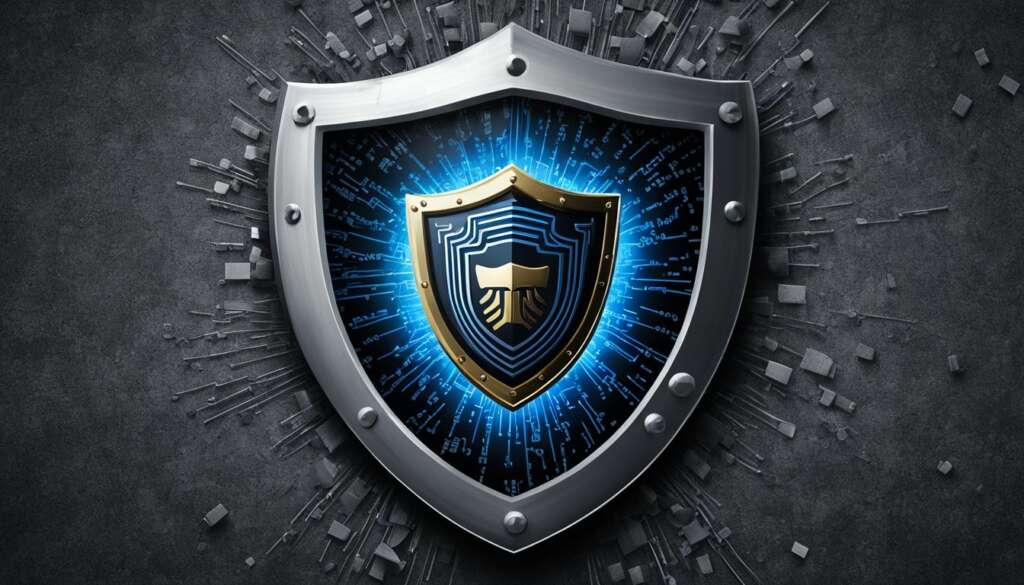Table of Contents
The rise of the internet has significantly changed the way people live, work, and communicate. However, with the emergence of new technologies comes a new set of challenges, and one of these is malware. Malware is a type of malicious software that can wreak havoc on your digital devices, compromising your privacy and security. In this section, we will delve into the topic of malware, understanding its risks, and providing essential prevention tips to safeguard your digital life.
Key Takeaways
- Malware is a type of malicious software that can harm digital devices.
- Understanding the risks associated with malware is crucial for cybersecurity.
- Prevention tips such as using antivirus software, safe browsing habits, and keeping software up to date can protect against malware attacks.
- Cybersecurity should be a priority to ensure a safe and secure online experience.
What is Malware? Defining the Threat
Malware, short for malicious software, is an umbrella term used to describe any type of software designed to intentionally harm or damage a computer system, network, or device. Malware can take many forms, each with their own unique characteristics and methods of infection.
Common types of malware include:
| Malware Type | Description |
|---|---|
| Virus | A program that copies itself and infects a computer system, often destroying files or causing other damage. |
| Trojan | A program that appears harmless but is designed to install other malicious software on a system without the user’s knowledge. |
| Worm | A self-replicating program that spreads through a network, often consuming bandwidth and slowing down devices. |
| Ransomware | A type of malware that denies access to a system or files until the victim pays a ransom to the attacker. |
| Adware | A program that displays unwanted advertisements or pop-ups on a user’s device without their consent. |
Malware can be distributed through various channels, including email attachments, infected websites, social engineering tactics, and software vulnerabilities. Once on a system, malware can perform a range of actions, from stealing sensitive information to gaining control of a device.
It is crucial to keep antivirus software up-to-date to provide essential protection against malware.
Risks of Malware and How it Spreads
Malware is a serious threat to the security of your devices and data. It can cause a range of problems, from slowing down your computer to stealing your personal information. To protect yourself against malware, it’s important to understand the risks and how it spreads. Here are some common ways that malware can infect your devices:
Email Attachments
One of the most common malware infection methods is through email attachments. Cybercriminals often send emails with attachments that appear harmless, but actually contain malware. Once you open the attachment, the malware can infect your device.
Infected Websites
Another way that malware spreads is through infected websites. If you visit a website that is compromised with malware, it can infect your device through vulnerabilities in your web browser or operating system.
Malicious Downloads
Downloading software, files, or apps from untrustworthy sources can also put you at risk of malware infections. Cybercriminals often use download sites to distribute malware disguised as legitimate software. Once you download and install the software, the malware can run undetected on your device.
“Malware can be devastating, leading to data loss, financial loss, and even identity theft. Cybercriminals are becoming increasingly sophisticated in their methods, so it’s essential to stay vigilant and take precautions to protect yourself.”
To safeguard against malware risks and prevent malware infections, it’s essential to stay up to date with cybersecurity best practices. The next section will cover some prevention tips to help you protect your devices and data against malware attacks.
Prevention Tips: Safeguarding Against Malware
Protecting your devices and data from malware should be a top priority. Here are some practical prevention tips:
- Use robust antivirus software and ensure it is always up to date. Regularly run virus scans to detect and remove any malicious software.
- Practice safe browsing habits by avoiding clicking on suspicious links or downloading files from untrusted sources. Be wary of pop-up ads or emails requesting personal information or prompting you to take immediate action.
- Keep your software up to date, including your operating system, web browser, and other applications. Software updates often include security patches that address vulnerabilities and protect against new threats.
- Implement strong passwords that are unique to each account and use two-factor authentication whenever possible. Avoid storing passwords in plain text files or on easily accessible devices.
By following these cybersecurity best practices, you can significantly reduce the risk of malware infection and protect your personal and professional assets. Remember to stay vigilant and regularly review your security measures to ensure they remain effective.
Conclusion
In conclusion, it is vital to comprehend the risks that come with malware in today’s digital world. By following the prevention tips provided in this article, you can significantly decrease the chances of becoming a victim of malware and thereby protect your digital life from potential harm. Remember to stay vigilant and prioritize cybersecurity to ensure a safe and secure online experience. With the increasing prevalence of cyber threats, it is crucial to remain up to date on the latest cybersecurity practices and implement them to safeguard your devices and data against potential attacks.
FAQ
What is malware?
Malware refers to malicious software that is designed to infiltrate, damage, or gain unauthorized access to computer systems or networks. It can come in various forms, such as viruses, worms, trojans, ransomware, or spyware.
What are the risks of malware?
The risks of malware include unauthorized access to personal or sensitive information, financial losses, identity theft, system slowdowns or crashes, and compromise of network security. Additionally, malware can spread to other devices or networks, causing a ripple effect of damage.
How does malware spread?
Malware spreads through various methods, including email attachments, infected websites, malicious downloads, removable storage devices, and compromised software or applications. It can also be spread through social engineering tactics, like phishing emails or deceptive downloads.
How can I prevent malware infections?
To prevent malware infections, it is important to practice good cybersecurity habits. This includes using reputable antivirus software, regularly updating your operating system and applications, avoiding suspicious links or downloads, being cautious with email attachments, and maintaining strong, unique passwords. It is also advisable to backup important data regularly and educate yourself about common malware attack techniques.
What are some cybersecurity best practices?
Some cybersecurity best practices to protect against malware include using a reliable firewall, enabling automatic software updates, using secure Wi-Fi networks, avoiding clicking on pop-up ads or unknown links, and being cautious when sharing personal information online. Regularly monitoring your accounts and reviewing financial statements is also recommended.












